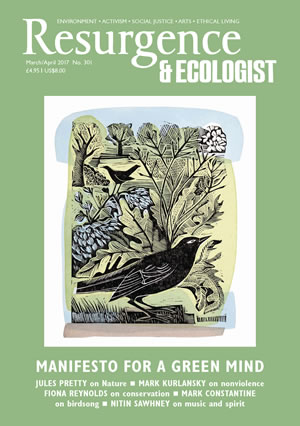The Outer Hebrides is a landscape full of history and beauty. Raised on Lewis, Alastair McIntosh is a fascinating guide to one of the least-known parts of the British Isles.
A travel book immediately prompts two questions in the prospective reader: is this book going to take me somewhere I want to go? Is the author a congenial travelling companion? Given my decades-long fascination with the Hebrides, I didn’t hesitate on the first: a book that takes me back there every night for a few pages before I fall asleep was an easy sell. On the second, I grew fond of my guide, with his quirky self-deprecation. But be warned: he is talkative; this is as much a journey into an unusual mind as it is about the Long Island.
Many of the places McIntosh travels through on his 12-day walk (with some fishing on the side, hence the reference to poaching) from the southern tip of Harris to the north of Lewis are compelling. The exquisite 16th-century church at Rodel, Harris is nestled into the folds of a valley of grazing sheep. Inside, the carved memorials with their depiction of galleys in full sail conjure up the history of clans fighting for these islands on the edge of the ocean.
The route he takes through the mountainous territory along the Harris/Lewis border – it’s a curious anomaly that the two ‘islands’ are actually part of one landmass – is rough underfoot, with few paths and the highest mountains in the Outer Hebrides; once down on lower ground in Lewis, one is into treacherous bog. McIntosh is endearingly honest about his nervousness and refers to being in MAMBA – Miles and Miles of Bugger All. This is not a book about the heroic male adventurer, of which Scotland has provoked a tiring quantity. Rather it is in the tradition of the wonderful exploration of the Assynt in north-west Scotland, At the Loch of the Green Corrie, by the poet and novelist Andrew Greig. A journey becomes an opportunity for loving appreciation of the land, but also for reflection and a process of taking stock in midlife.
There is plenty of the latter in Poacher’s Pilgrimage. McIntosh has been a campaigner and activist for several decades and there are some resounding achievements to celebrate: he supported the Eigg community buyout of the island, which was a turning point in the community ownership movement. He was also part of the campaign to reject the development of a superquarry on Harris. Less well known perhaps is the extraordinary role he has played in military academies, where he gives talks to officers on the pacifist perspective on violence. This has led to some remarkable conversations with generals, as he recounts in the book, some prickly and others disarmingly uncertain of the value of their work.
All of this makes fascinating reading as we plod through the bogs and hear nuggets of island history and the Gaelic culture of Harris and Lewis. McIntosh’s route is determined by a series of holy sites – ruined pre-Reformation chapels, holy wells, and the beehive cells once believed to have been used by Celtic hermits. This is what prompts the dominant themes of the book, as McIntosh wrestles with spiritual belief, whether the islanders’ strict Presbyterianism, his love of Scottish faerie traditions, or his own panentheism (the belief that the divine interpenetrates every part of the universe and extends beyond time and space). It’s a heady mix, and when mingled with thick mist and vigorous scrambling over the moor it can feel a tad ungrounded. Thankfully – and this provides some of the best sections of the book – McIntosh stumbles into islanders who bring him back down to earth, occasions he portrays with vivid description and great affection.







